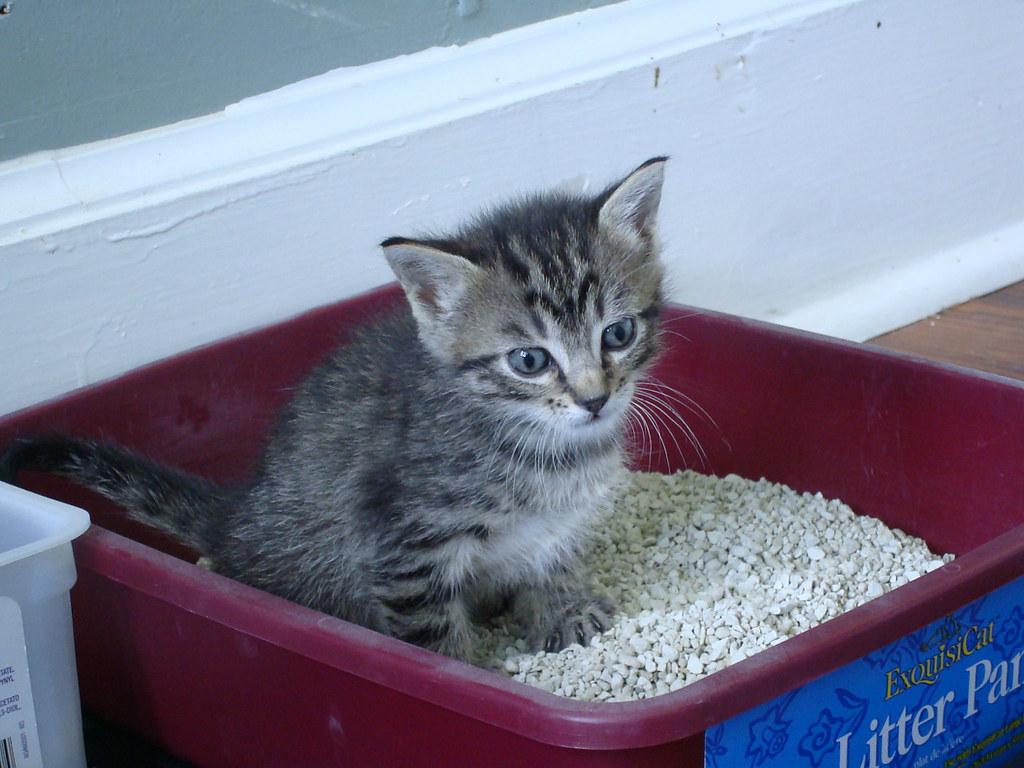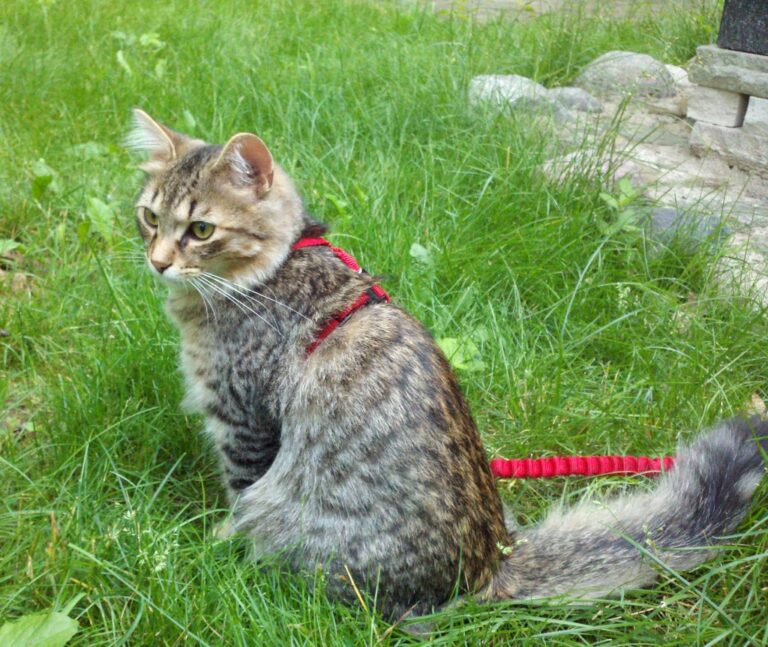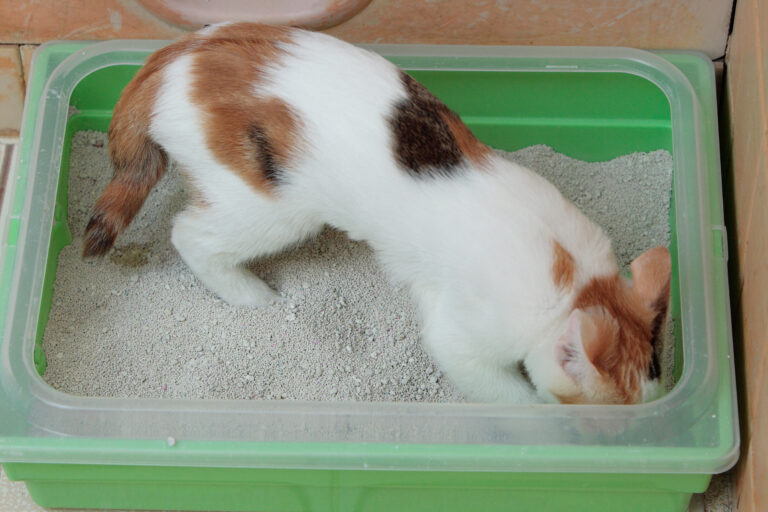How to Train a Cat to Use the Litter Box

Cat owners know that proper litter box training is essential for maintaining a clean and harmonious home. While cats are naturally inclined to use a litter box, some may require a little extra guidance. In this article, we will guide you through the process of training your cat to use the litter box effectively. So let’s get started!
Training your cat to use the litter box is a crucial step in establishing good habits and preventing accidents around the house. It not only keeps your home clean and odor-free but also ensures your cat’s comfort and well-being. By following a few simple strategies and understanding your cat’s needs, you can successfully train her to use the litter box consistently
Understanding the importance of litter box training
The first step in training your cat to use the litter box is to understand why it’s so important. Cats have an innate instinct to bury their waste, and a litter box provides them with a designated spot to do so. Without proper training, they may choose alternate places like carpets or plants, leading to unpleasant surprises around the house. Litter box training helps avoid these accidents and creates a hygienic environment for you and your furry friend.
Preparing for Litter Box Training
Choosing the right litter box
When it comes to selecting a litter box, consider the size and accessibility for your cat. A larger box is generally preferable, as cats appreciate ample space to move around while doing their business. Additionally, opt for a box with low sides or an entrance, especially if you have kittens or elderly cats, as it allows easy entry and exit.
Selecting the right litter
The type of litter you choose plays a vital role in your cat’s willingness to use the litter box. Many cats prefer fine-grain, unscented litter. However, it’s best to experiment with a few options to find the one that your cat finds most comfortable.
Finding the perfect location
Identifying an appropriate location for the litter box is crucial. Cats prefer privacy, so choose a quiet area away from high foot traffic or noisy appliances. Ensure the litter box is easily accessible and not placed too close to your cat’s food and water bowls.
Introducing your cat to the litter box
Creating a positive association
To create a positive association with the litter box, place your cat in it shortly after meals or naps. Gently scratch the litter with your cat’s paw to demonstrate its purpose. Use positive reinforcement, such as treats and praise, to reward your cat for any interaction with the litter box.
Gradual introduction
Gradually introduce your cat to the litter box by confining them to a small area with the box for short periods. This limited space encourages your cat to use the litter box. As your cat becomes comfortable, gradually expand their access to the rest of the house.
Encouraging exploration
Make the litter box inviting by keeping it clean, ensuring there is enough litter for digging, and placing it in a comfortable and quiet spot. Avoid startling your cat with sudden noises or movements while they explore the litter box. Patience and positive reinforcement are key during the early stages.
Encouraging your cat to use the litter box
Monitoring your cat’s behavior
Keep a close eye on your cat’s behavior, especially during the initial stages of litter box training. Look for signs of snuffing, scratching, or circling, as these indicate your cat needs to use the litter box. Promptly guide them to the box and reward them for using it correctly.
Reinforcing positive behaviors
Whenever your cat uses the litter box correctly, reward them with treats and praise. Positive reinforcement helps solidify the association between the litter box and positive experiences. Consistency is vital to ensure your cat understands the desired behavior.
Managing accidents and setbacks
Accidents are bound to happen during the learning process. If your cat has an accident outside the litter box, clean the area thoroughly and avoid using ammonia-based cleaners, as their scent can attract cats to repeat their behavior. Use an enzymatic cleaner specifically designed for pet accidents to eliminate odors effectively.
Troubleshooting litter box issues
Behavioral reasons behind accidents
If your cat continues to have accidents despite adequate training, it may indicate underlying behavioral issues. Cats may avoid the litter box due to stress, territorial disputes, or dislike of the litter type. Consult a veterinarian or a feline behaviorist to identify potential causes and develop a suitable plan of action.
Medical considerations
In some cases, litter box aversion can be a sign of an underlying health problem. Urinary tract infections, bladder stones, or other medical conditions may cause discomfort while using the litter box. If you suspect a medical issue, seek veterinary attention promptly.
Defying the litter box: why is my cat avoiding it?
If your cat is consistently avoiding the litter box, it could be due to several reasons. Consider the following possibilities:
- Health concerns: Cats often associate pain or discomfort with the litter box, so it’s crucial to rule out any potential medical issues by consulting a veterinarian.
- Litter box aversion: Cats are fastidious creatures and have specific preferences. Test different types of litter, boxes with varying heights, or even covered versus uncovered options to determine what your cat prefers.
Maintaining a clean litter box
Scooping and cleaning tips
Regularly scooping the litter box is crucial to maintain cleanliness and prevent odor buildup. Aim to scoop daily and remove any clumps or waste deposits. Ensure that the litter maintains a depth of around two inches, topping it up when necessary.
Regular litter box maintenance
In addition to daily scooping, it’s essential to perform regular deep cleaning. Empty the litter box completely, wash it with mild soap, and rinse thoroughly. Avoid using strong-smelling cleaners or disinfectants as they may discourage your cat from using the box.
Conclusion
Litter box training is a foundational aspect of cat ownership. By following the steps outlined in this article, you can effectively teach your furry friend to use the litter box and enjoy a clean and harmonious living space together. Remember that patience, positive reinforcement, and attention to your cat’s needs are key to a successful training experience.
Frequently Asked Questions
The training period can vary, but most cats can be successfully litter box trained within a few weeks.
If your cat consistently refuses to use the litter box, consult with your veterinarian to rule out any underlying health issues. They can provide guidance and advice specific to your cat’s situation.
Cats have individual preferences when it comes to litter type. Experiment with different options to find the one that your cat prefers and feels comfortable using.
No, punishment is not recommended when it comes to litter box training. Punishing your cat may create fear or anxiety and can make the training process more challenging. Focus on positive reinforcement and patience instead.


